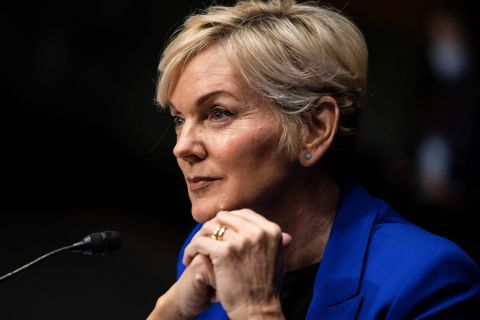Jack Belcher, Consumer Energy Alliance
In what promises to be one of its final major energy policy decisions, the Obama administration’s Interior Department released its next five-year offshore oil and gas leasing program with no lease sales scheduled for the offshore Arctic or the Atlantic Ocean from 2017 through 2022.
While not entirely unexpected, the regrettable decision was the culmination of years of a slow regulatory and comment march in which hundreds of thousands of citizens, communities, and businesses expressed their hope that the administration would seize upon the progress made by the U.S. during the energy revolution, and translate our know-how and technology advances into an even bigger job creator and source of economic growth for American families and communities.
We have all witnessed the benefits that the energy revolution has brought to American workers, consumers and families, as well as to our national security. Technological advances have made the U.S. second to none in our ability to find, safely and effectively access, and responsibly develop offshore oil and gas resources in the deepwater offshore and in other frontier areas.
Rather than embrace our nation’s competitive advantages, the policies of the Obama administration instead have unfortunately chosen to ignore our ingenuity and the benefits it can bring.
The announcement was especially bad news for Alaska, and the future of the Trans-Alaska Pipeline System (TAPS), which badly needs new oil sources to keep it operating.
In October, Caelus Energy LLC, a privately held independent E&P company, made a world-class find in state waters on Alaska’s North Slope. With an estimated net recovery of 2.4 billion barrels of oil, this find could be larger than ExxonMobil’s 2015 discovery off the coast of Guyana in South America. It was not only great news for Caelus Energy but for the state of Alaska at a time it needed some good news.
It demonstrates what U.S. oil and gas producers can do when the government doesn’t stand in their way. But it is only a small step, and it alone doesn’t solve the TAPs problem. Indeed, in Alaska, it is an anomaly that will certainly be targeted by anti-development NGOs. Fortunately, a new administration in Washington, D.C. , may reverse years of saying “no” to America’s energy.
More Than Symbolic Statements
The newly announced offshore program is only one of a slew of executive actions that President Obama has taken that threaten the future of domestic offshore drilling.
The regulatory methods of attack have varied. The administration has a knack for finding loopholes and creative uses of legislation—like the Antiquities Act of 1906, which gives a president unilateral authority to protect federal lands as national monuments with the mere stroke of a pen. It has used this tactic nearly two dozen times in defiance of public opposition, including through the following actions prohibiting commercial extraction, including, but not limited to, offshore drilling:
- Expanding the Pacific Remote Islands Marine National Monument off Hawaii by nearly six-fold, from about 87,000 square miles to about 490,000 square miles;Creating the world’s largest marine-protected area by more than quadrupling the size of the Papahānaumokuākea Marine National Monument off Hawaii, from about 140,000 square miles to 583,000 square miles; and
- Creating the first offshore monument in the U.S. Atlantic, consisting of some 5,000 square miles of protected area off the New England coast.
In all, President Obama has set aside 3.9 million acres for federal protection using the Antiquities Act, and has made more proclamations using the act than any other president. While the three aforementioned areas are not necessarily of commercial interest to offshore oil and gas producers, these actions set a dangerous precedent that opens the door to, and increases the threat of, future designations in the Gulf of Mexico, Arctic and Atlantic Ocean, where Obama has already made his mark – or might be looking to do so.
In fact, early warning signs surfaced years ago back in the administration’s first term, when the Interior Department, citing the National Ocean Policy as justification in part, said it wouldn’t propose any new areas for offshore oil and natural gas leasing through 2017. That announcement was a prelude to a wave of actions that would ultimately erode access to existing areas as well.
In December 2014, the president issued a directive under the Outer Continental Shelf Lands Act to indefinitely withdraw the North Aleutian Basin Planning Area from future oil and natural gas leasing—an area with roughly 32.5 million acres that contained an estimated 750 million barrels of oil (MMbbl) and 8.62 trillion cubic feet of natural gas.
A month later, he signed off on another executive action, under the same law, to indefinitely block the leasing of 9.8 million acres within the Beaufort and Chukchi seas. The declaration came days after he asked Congress to declare much of the Arctic National Wildlife Refuge, one of Alaska’s best onshore energy prospects, as hands-off wilderness.
Taken together, the administration’s actions have snatched away tens of thousands of would-be jobs and billions in expected revenue, without giving due deference to those most affected by these decisions—Alaskan consumers and businesses. The actions also created a major roadblock to the state’s efforts to secure an alternative source of oil to help close its multibillion-dollar budget shortfall and replenish TAPS.
Bogged down by red tape, delays, legal snafus and the president’s foolhardy, one-size-fits-all regulatory approach, Alaska has seen its economic future unnecessarily darken. So, too, has America. Consider this: based on conservative resource estimates, Alaska contains enough oil to fuel every domestic flight for more than 120 years, and enough natural gas to heat every American house for 34 years.
That’s a lot of missed opportunity, not just in Alaska, but elsewhere.
Consider also the Mid- and South Atlantic region extending from Virginia to Georgia, which was removed from leasing consideration through 2022 despite across-the-board support for development from the region’s citizens, business community, and elected officials.
At the same time, the National Oceanic and Atmospheric Administration (NOAA) proposed an expansion of a national marine sanctuary off North Carolina that could impact future offshore energy exploration and development activity in the region.
Perhaps industry’s greatest threat now is in the Gulf of Mexico, where some groups are urging President Obama to take executive action to indefinitely remove the region from future leasing, like he has already done in parts of the Arctic.
Already, and contrary to the recommendation of its advisory council, NOAA has proposed to expand the Flower Garden Banks National Marine Sanctuary nearly six-fold in the Gulf of Mexico, an expansion that, if enacted, could, in NOAA’s words, make leasing and production “more difficult or costly.”
While NOAA claims that the proposed expansion area intersects with 108 lease blocks and 25 active leases containing 13 MMbbl and gas reserves, industry says the area could contain billions of barrels of oil and gas. The Interior Department, which is proposing new requirements for seismic surveys including seasonal closures that are more restrictive than what has traditionally existed in the Gulf of Mexico, also believes that NOAA’s analysis lacks sufficient data, including a comprehensive study of the area’s undiscovered oil and gas resource potential.
These actions have the potential to impact future oil and gas development, not only in new areas, but in the existing heartland of U.S. offshore oil and gas development. This is a frightening prospect.
Fighting Back
The U.S. Department of Energy recently reported that by 2040, 63% of American energy will still come from oil and natural gas. Swelling demand makes finding and developing fossil fuel energy—safely—that much more of a top priority for businesses and consumers.
However, with the Arctic Ocean, Atlantic Ocean, and Pacific Ocean currently off the table, and with additional executive actions possible in the waning days of the administration that could affect these areas and other regions like the Gulf, one must wonder whether federal obstacles will increase our reliance on overseas sources to meet our long-term energy needs.
The U.S. has proven that its technology and know-how can be used to find and develop some of the most complex oil and gas resource plays in the world. Our prowess in the deepwater Gulf of Mexico and shale plays has proven that there is virtually no challenge we cannot overcome if given the chance.
As the Obama administration exits, the ability to achieve such advances in the U.S. offshore has become increasingly constrained and continues to face significant risks. The critical question now is whether the new Trump administration and Congress have the will to reopen the door to the historic opportunity associated with the nation’s offshore resources.
Jack Belcher is executive vice president of the Consumer Energy Alliance.
Recommended Reading
CERAWeek: Energy Secretary Defends LNG Pause Amid Industry Outcry
2024-03-18 - U.S. Energy Secretary Jennifer Granholm said she expects the review of LNG exports to be in the “rearview mirror” by next year.
Tax Credit’s Silence on Blue Hydrogen Adds Uncertainty
2024-01-31 - Proposed rules for the 45V hydrogen production tax credit leave blue hydrogen up in the air, but producers planning to use natural gas with carbon capture and storage have options.
Investors: Energy Transition is on Policy-driven Life Support
2024-03-20 - Injecting private capital into the energy transition is worrisome because some projects couldn’t survive without government incentives, panelists said at CERAWeek by S&P Global.
US Finalizes Big Reforms to Federal Oil, Gas Drilling
2024-04-12 - Under the new policy, drilling is limited in wildlife and cultural areas and oil and gas companies will pay higher bonding rates to cover the cost of plugging abandoned oil and gas wells, among other higher rates and costs.
New BOEM Regulations Raise Industry Decommissioning Obligations by $6.9B
2024-04-15 - Under new regulations, the Bureau of Ocean Energy Management estimates the oil and gas industry will be required to provide an additional $6.9 billion in new financial assurances to cover industry decommissioning costs.




